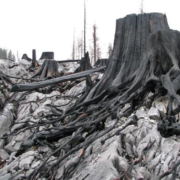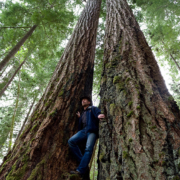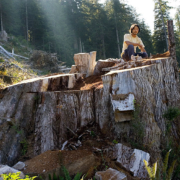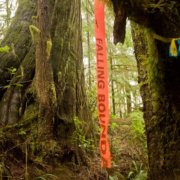Pandora fans feeling blue over the Earth
What’s 12 feet tall and blue all over?
If you’ve seen the movie Avatar — and who hasn’t? — you’ll know the answer to that question is the Na’vi, the incredibly cool, nearly naked aliens with cornrows and braids who live on the incredibly cool, beautiful planet known as Pandora, all threatened by the techno-military-industrial (and little) bad guys from Earth, who lust for a metaphorical mineral called “unobtanium.”
That’s us, folks.
People have begun to notice a strange thing when they take off their 3-D glasses and re-enter the real world after a two-hour 40-minute exposure to Pandora. This beautiful place, inhabited by intelligent (and really tall) beings who have a direct link to Aywa, a.k.a. Mother Nature, is so vividly drawn that the planet we actually live on, Earth, seems like a giant slum.
Moviegoers are pouring their hearts out on blogs and chat rooms, all mourning the loss of Eden, er Earth, and wishing they were cool and connected like the Na’vi.
There’s at least one group that’s not lying around in a Pandora-induced coma. The Ancient Forest Alliance, based in Victoria, gets Avatar and understands its value in spawning a whole new generation of Na’vi-loving environmentalists. Not daunted by the anti-global warming backlash, the alliance has picked a likely forest near Port Renfrew and dubbed it “Avatar Grove.”
Sounds so much better than Tree Farm Licence No. 46.
We dare you, says the alliance, to clear-cut this little slice of Pandora on Earth. If I’m the Teal-Jones Group, which owns the licence, I’d send my PR department to the movie to take notes. Can you imagine Hollywood actresses in cornrows chained to trees, weeping for Avatar Grove? The Ancient Forest Alliance can.
It’s entirely possible the Last Battle for the Planet Earth will be played out in Canada. After all, James Cameron, Avatar’s creator, is Canadian; his art director studied the Athabasca oilsands project for its lurid images of environmental destruction.
And British Columbia is one of the last Pandora-like preserves on Earth. Its ancient forests (sounds better than old growth, no?) protect 1,600 species at risk and 60 per cent of the nation’s evergreen trees.
Even the Port Renfrew Chamber of Commerce, once a bastion of hewers of wood, now believes the best bet for the future is to save Avatar Grove for the tourists. If you loved the movie, stay tuned for the sequel — it’s coming soon to an ancient forest near you.







